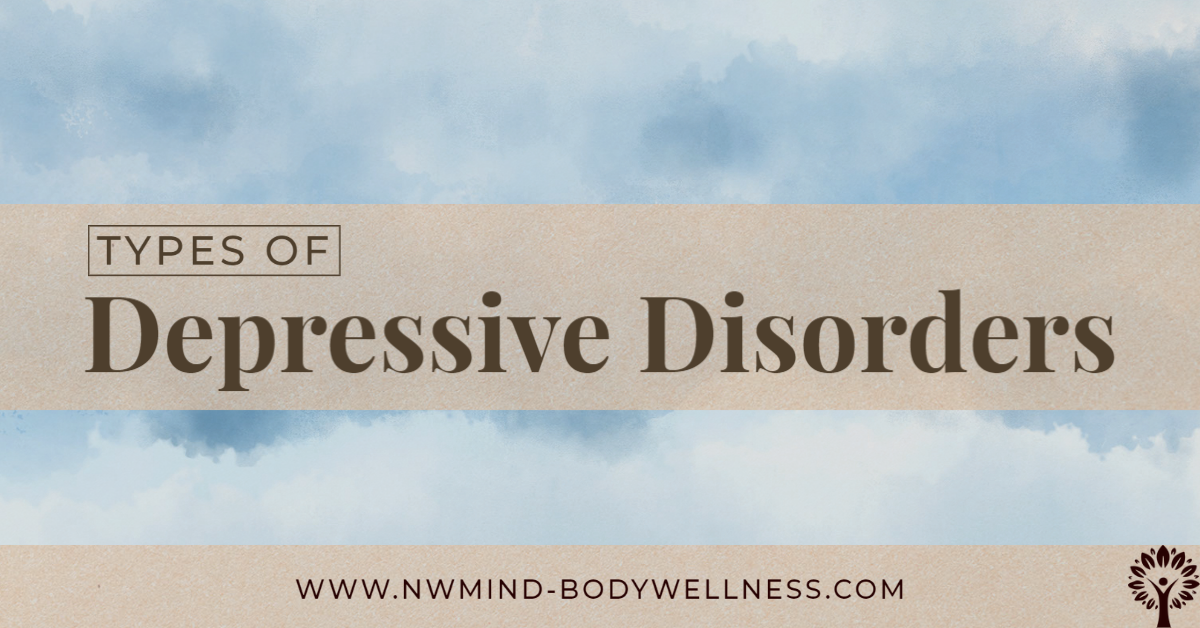Depressive Disorders
There are multiple different types of depressive disorders. People often view these disorders as the same thing, however, they vary in symptoms and causes. Determining what type of depression you are experiencing is important in creating a treatment plan that is right for you. It is important to speak with your healthcare provider if you believe you are experiencing symptoms of depression.
One of the most common mental health conditions is depression. According to the World Health Organization (WHO), it is estimated that 280 million people worldwide have depression.
Although the symptoms of depression may vary depending on what type you are experiencing, depression can often affect the way that an individual thinks, feels, and acts. Fortunately, treatment for depression has proven effective for many. With the right treatment plan many experience relief from their symptoms.
The following consists of information on many, but not all, of the common types of depression.
Types of Depression
Major Depressive Disorder (MDD)
- For one to be diagnosed with MDD, their symptoms will have lasted for more than two weeks and typically cause significant interference with daily activities.
Persistent Depressive Disorder (PDD) (also referred to as dysthymia)
- PDD often causes less severe symptoms of depression. However, the symptoms last longer, typically for at least two years.
Seasonal Affective Disorder (SAD)
- For those with seasonal affective disorder, their symptoms typically come and go with the changing of seasons. Most individuals with SAD experience symptoms of depression in the fall and winter, with symptoms subsiding during the spring and summer months.
Perinatal Depression
- Perinatal depression can be experienced during pregnancy, or after delivery of the baby (postpartum depression).
SYmptoms
The signs and symptoms of depression vary by person and type of depression, but they commonly include:
- Feeling sad or hopeless
- Changes in sleeping pattern
- Lack of interest in once enjoyable activities
- Trouble thinking or concentrating
- Changes in appetite
- Anxiety
- Irritability or frustration
- Feelings of guilt
- Lack of energy
- Suicidal thoughts
Causes and RIsk Factors
There are many causes and risk factors for depressive disorders. Although there is no one clear cause for the disorder, risk factors include:
- Life circumstances such as relationships, financial situations, and more can influence someone developing depression.
- Trauma can cause long-term changes in the way that one thinks and make them more vulnerable to depression.
- Genetics play a strong role in mood disorders as they tend to run in families.
- Other medical conditions can contribute to depression. Many physical and mental health conditions can increase one’s risk for depression.
Treatment
Symptoms of depression can often be relieved through treatment. Studies show that depression is one of the most treatable mental illnesses. After proper evaluation, a health care provider can help create a treatment plan suited to you. Treatment plans may include a combination of:
- Medication
- Antidepressants are the most common medication used to treat depression. In some cases, mood stabilizers and antipsychotic medications may also be prescribed.
- Psychotherapy
- Psychotherapy is commonly used to treat depression and can be very beneficial. Commonly used types of psychotherapy used in the treatment of depression include cognitive behavioral therapy, interpersonal therapy, and family-focused therapy.
- Self Help
- There are a variety of ways that an individual can help reduce symptoms of depression. Symptoms of depression are often decreased by exercise, getting enough sleep, eating healthy, and more.
Crisis Help
If you or a loved one is in a crisis, it is important to get help immediately. If in danger of suicide:
- Call 911
- Go to the nearest emergency room
- Call the toll-free, 24-hour Suicide and Crisis Lifeline hotline at 988
Learn More
- To learn more about depressive disorders, we recommend contacting your healthcare provider.
- To read more, the following resources are suggested:
Return to home page: https://nwmind-bodywellness.com/
Read more articles: https://nwmind-bodywellness.com/articles/
